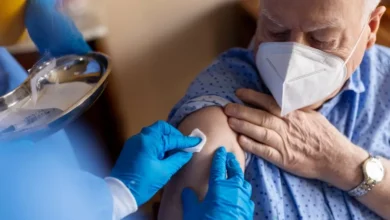Brisk walking for 22 minutes a day can ward off fatty liver disease: Study

Just 22 minutes of brisk walking a day can protect against non-alcoholic fatty liver disease (NAFLD), a new study finds.
Researchers at Penn State College of Medicine in the US analyzed 14 trials that included 551 patients with NAFLD who participated in randomized controlled trials focusing on exercise interventions.
They found that exercise is 3.5 times more likely to produce results compared to conventional methods of care, with 39 percent of patients who reached or surpassed the equivalent of 150 minutes of weekly brisk walking able to reach a healthy liver threshold.
“Our findings can give physicians the confidence to prescribe exercise as a treatment for nonalcoholic fatty liver disease,” Jonathan Stine, Associate Professor of Medicine and Public Health Sciences, and Hepatologist at Penn State Health Milton S. Hershey Medical Center, said in a statement.
“Having a target amount of physical activity to aim for will be useful for health care and exercise professionals to develop personalized approaches as they help patients modify their lifestyles and become more physically active.”
NAFLD is a condition in which fat accumulates in the liver of individuals who do not drink excessive amounts of alcohol. It is often the result of obesity, Type 2 diabetes, or having high blood pressure, high cholesterol, or high triglyceride levels.
If left untreated, it can lead to even more serious complications such as cirrhosis (liver scarring) and cancer, as there are currently no approved drugs or cures for the condition.
NAFLD affects almost 30 percent of people globally and can lead to serious complications like cirrhosis and cancer. The lack of approved drugs or cures makes it crucial to know that something as simple as exercise can reduce liver fat and improve overall physical health and quality of life.
“Exercise is a lifestyle modification, so the fact that it might match the ability of in-development therapeutics to achieve the same outcome is significant,” Stine added.
“Clinicians counseling patients with NAFLD should recommend this amount of activity to their patients. Brisk walking or light cycling for 1/2 an hour a day five times a week is just one example of a program that would meet these criteria.”
The findings of the study were published in the American Journal of Gastroenterology. Stine agrees that further randomized controlled trials are necessary to validate the findings even more.










